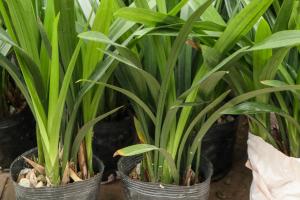How to Plant Sapodilla Tree
Sapodilla tree is a tropical fruit tree that is native to Mexico and Central America. It is grown for its sweet and juicy fruits that have a unique flavor. If you are interested in growing sapodilla tree in your garden, here is a step-by-step guide on how to plant sapodilla tree.
Step 1: Choose the Right Location
The first step is to choose the right location for planting sapodilla tree. It prefers a sunny location with well-drained soil that is rich in organic matter. The soil pH should be between 6.0 and 7.5. Avoid planting in low-lying areas or areas that are prone to flooding. Sapodilla tree can tolerate salty soils, but it is not recommended for areas that are exposed to salty winds.
Step 2: Prepare the Planting Hole
The planting hole should be at least two times wider and deeper than the sapodilla tree root ball. Remove any rocks, weeds, or debris from the planting area. If the soil is poor, you can improve it by adding compost or well-rotted manure.
Step 3: Plant the Sapodilla Tree
Take the sapodilla tree out of its container and loosen the roots gently. Place the tree in the planting hole and backfill with soil, tamping it down firmly. Make sure the sapodilla tree is planted at the same depth as it was growing in the container. Water the tree thoroughly to settle the soil and eliminate any air pockets.
Step 4: Mulch and Water the Sapodilla Tree
Mulch around the sapodilla tree with a layer of organic matter such as bark chips or straw. This will help retain moisture in the soil and prevent weed growth. Water the sapodilla tree regularly during the first year of growth to establish strong roots. After that, water only when the soil is dry to the touch.
Step 5: Fertilize the Sapodilla Tree
Sapodilla tree benefits from regular fertilization to support its growth and fruit production. Apply a balanced fertilizer with a 10-10-10 ratio in spring, summer, and fall. Use a slow-release fertilizer or apply liquid fertilizer every two weeks. Do not over-fertilize, as this can damage the tree and reduce fruit quality.
Step 6: Prune the Sapodilla Tree
Prune the sapodilla tree in late winter or early spring to remove dead or damaged branches and to shape the tree. Thin out the center of the tree to allow air and light to reach the interior branches. Remove any suckers or water sprouts that grow from the base of the tree.
Step 7: Harvest the Sapodilla Fruits
Sapodilla fruits are ready for harvest when they turn brown and soften on the tree. Twist the fruits gently to remove them from the tree. Store them in a cool and dry place for a few days to ripen fully. Sapodilla fruits can be eaten fresh or used in various desserts and drinks.
By following these steps, you can successfully plant and grow a sapodilla tree in your garden. With proper care and maintenance, you can enjoy fresh and delicious sapodilla fruits for years to come.

 how many times do yo...
how many times do yo... how many planted tre...
how many planted tre... how many pine trees ...
how many pine trees ... how many pecan trees...
how many pecan trees... how many plants comp...
how many plants comp... how many plants can ...
how many plants can ... how many plants and ...
how many plants and ... how many pepper plan...
how many pepper plan...

































